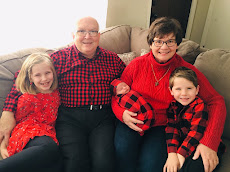Denominational Polity: Not Just for Church Nerds!
“Denominational polity” is a term that describes how a church body (a.k.a. denomination) is organized in order to carry out its mission and ministry. In the United States there is a range of options for how churches are put together, how power flows through the denomination, and how local congregations relate to the wider denomination.
Some churches are organized hierarchically—with
power flowing through a highly-structured system from the top down. The Roman Catholic Church exemplifies this
model.
Other churches are organized democratically,
with power flowing through a widely-dispersed organization, from the bottom (a.k.a.
“grass roots”) up. The Southern Baptist Convention (SBC) is an
exemplar of this sort of polity.
Still other churches exhibit elements of both
hierarchical and democratic polities, such as the historic Protestant church
bodies in North America—e.g. Lutheran, Methodist, Presbyterian, and Reformed
churches.
In the wake of the latest news emerging from the
Southern Baptist Convention (SBC)—reports alleging that the denomination has
failed to respond effectively and compassionately to hundreds of victims who
have accused their religious leaders of engaging in sexual misconduct—it’s vital
to understand the importance of the SBC’s denominational polity.
The key unit in the organization of the SBC is the
local congregation. Each congregation
basically “calls the shots” for how ministry is organized and carried out. The wider denomination is primarily
“advisory” in nature. If members of a
congregation cannot agree on potentially church-dividing issues, a faction of
members who are at odds with their fellow-congregants will often withdraw and
form a new congregation. (As our family
experienced many years ago on a vacation trip through the “deep South,” it’s
common to see clusters of Baptist congregations within close geographic
proximity to one another—reflecting a pattern of tiny faith communities that
have splintered off from one another.)
Discussing the recent shocking report by Guidepost
Solutions (an independent firm contracted by the SBC’s Executive Committee to
look into the reports of hundreds of clergy sexual misconduct cases in the
SBC), Christa Brown, a member of the SBC
who is a lawyer, writer and victim of clergy abuse declared: “What is absolutely critical is that the
local church cannot function as the default or presumed starting place for a
survivor to try to obtain an investigation of clergy sex abuse….If the local
church is deemed to be a requisite first stop for survivors to pursue action,
then many survivors’ voices will be choked in their throats before sound is
ever uttered.”
I believe that what Ms. Brown identifies here is a
challenge posed by the SBC’s “bottom up" democratic polity which is highly
focused on each congregation being the primary unit of the denomination. Despite the strengths of such a
denominational polity, it’s also clear that local congregations usually lack the
capacity to step outside their tightknit “family circles” to exercise fair and
effective discipline when an often-beloved local pastor is called to account
for misbehavior. It will be especially fascinating to see how
the SBC responds to Guidepost Solutions’ recommendation that the denomination
create an “Offender Information System” that would inform local call processes
for pastors across the whole SBC. The creation
of such informational systems has been a primary way of addressing the problem
of an offending pastor leaving one congregation and then being considered for
the pastorate of another congregation.
Doing so would involve changing the “culture” of the SBC—moving the
denomination from being strictly a “bottom up” organization to incorporate
elements of a more “top down” organization.
Lest we assume, however, that “top down” denominations
are more adept at stopping clergy sexual misconduct, we need to ponder the
recent history of the Roman Catholic Church’s agonizing attempts to reduce the
number of offending clergy in its own ranks.
This has been a challenge for the Roman Catholic Church for a number of
reasons, including
· The
revered status of priests whose ordination is understood to convey a permanent,
“indelible image” that sets them apart from the laity of the church;
· The
fact that the laity of the church are highly dependent upon their priests (and
bishops) who alone can preside at the sacraments that are foundational for
Catholic faith and life;
· The
solidarity that celibate priests and bishops have with one another, often
leading them to “close ranks” when individual ministers are accused of
wrongdoing;
· The
challenge of incorporating laity into new pathways that have been designed to
prevent and/or adjudicate clergy sexual misconduct.
I believe that, with the SBC situation right before
us, we’re living in a time when both hierarchical and democratic church
polities are in flux as the faithful members of churches seek to “change their
stripes” in order to draw upon the strengths and opportunities provided by each
of the dominant patterns for their respective polities. Catholics have slowly but surely become more
open to involving laity in investigating and adjudicating clerical malfeasance. And now it would appear that Southern
Baptists are being challenged to break free from their staunch “congregationalist”
approach to carrying out their mission and ministry.


